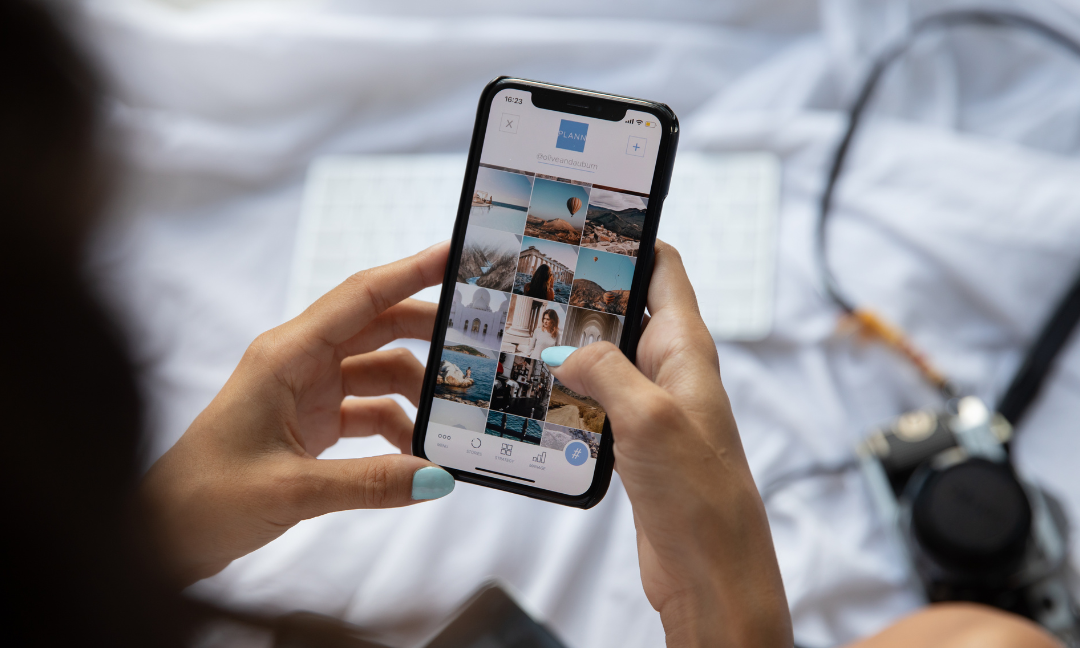We’re going into the NYOTA archives to find some of our favorite articles that weren’t originally shared on the site.
Words by Arielle Ostry
From short snippets of a makeup tutorial on TikTok to long-form storytelling covering an entire trip abroad on YouTube, we are increasingly consuming content made by and centered around the lives of people we have never – and most likely will never – meet.
While our understanding may start and end with what we witness through our very limited phone screens, many viewers can’t help but feel a certain level of camaraderie and familiarity with the people we watch, admire, and follow. And who can blame us when influencers and public figures are sharing everything from what they did with their kids today to how their Starbucks coffee run went to the new brand of shoes they can’t wait to buy?
We consider them ‘friends’ because we know so much about them: they may have posted videos about their first kiss, their favorite family recipe, their hopes for the future. But for many influencers sharing their lives with the internet, their experience could not be more skewed. They have hundreds or thousands or maybe even hundreds of thousands of ‘friends’ just like us. And to them, their community is a privilege with its own set of benefits and challenges.
So what happens when people get too close? What happens when online interaction meets the realities of the real-world? What can you do when your “fans” mistake a public online presence meant to foster support and affinity at a distance for true friendship?
Many online influencers from Instagram to YouTube to TikTok are navigating this challenge, and what I would consider a major burden of having a large online platform.
With large online platforms come large audiences, a potential breeding ground for parasocial relationships. Natalie Pennington, a communication professor at the University of Nevada, Las Vegas, defines a parasocial relationship as a one-sided relationship typically between an everyday individual and a celebrity or fictional character.
Nowadays, social media makes it possible for average, everyday people to ‘blow up’, go viral, and accumulate large followings. Their intimacy, candidness, and relatability make them appealing to watch, but these characteristics can simultaneously make select viewers feel like they have some sort of friendship, even if it is parasocial or one-sided.
There is nothing inherently harmful about parasocial relationships, but there are certain lines that, if crossed, can make this phenomenon harmful to both parties. For instance, if parasocial relationships are the only type of social interaction a person is experiencing, it can foster online dependency and social isolation with people in the real world. Additionally, with so much information about these everyday influencers available online, the potential for a parasocial relationship to be misconstrued by a viewer for a two-sided relationship can result in stalking, harassment, or other unsafe behaviors putting influencers at risk.
I’d argue that in addition to the challenges influencers with large audiences are grappling with on social media, the average social media user is also exploring questions concerning who they interact with online. Is the connection I talk to every day through a dating app my friend, even though we’ve never met? Are the other members in my college Facebook group my friends, despite not being able to recognize them if they walked past me on the street? Are my virtual interactions with people – from friends to followers to likes to comments – lopsided?
In the digital age, acquaintances, friends, and the possibility of obsessions are becoming harder to separate. COVID lockdown certainly didn’t help us in rooting out this problem. It forced more of our lives and social interaction online than ever before. Our school, work, personal communication and entertainment all migrated to living in the virtual space – and for some of us, they all still do.
I’m not writing about these issues to provide solutions, because I don’t have answers when it comes to life online. I spend a majority of my time here, from writing for work to writing for pleasure, catching up with friends and interacting with my family. For the most part, it all happens online.
More than anything, I hope this glimpse into my thoughts on friendship and the Internet provides a speck of awareness – a touch of clarity for those who recognize themselves in experiencing the challenges of a virtually social world. I hope you take a second to think deeply and ask yourself: who do you really know? Because the true answer is likely a whole lot less than you – or anyone else on the Internet – might think.
This story first ran in Issue 31. Read more from the issue here.


